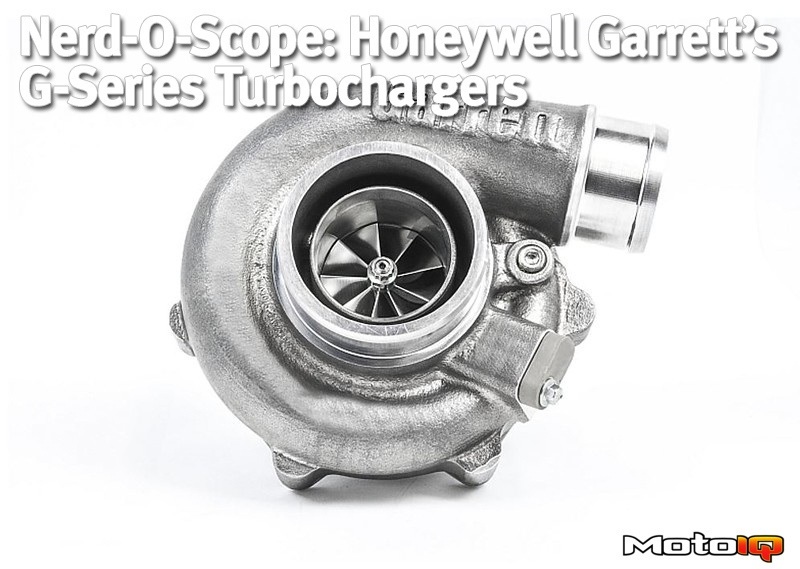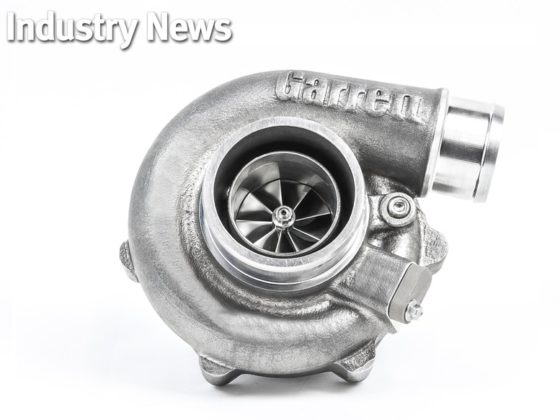,
 As was the case with going from GT to GTX Gen1, the new turbo flows like one size larger old turbo. The G-Series GT25-660 (67mm compressor) flows like the GTX3071R Gen2. Wrap your head around this: the new G-Series 67mm compressor wheel flows 5lbs/min more than the old GT3076R 76mm compressor wheel.
As was the case with going from GT to GTX Gen1, the new turbo flows like one size larger old turbo. The G-Series GT25-660 (67mm compressor) flows like the GTX3071R Gen2. Wrap your head around this: the new G-Series 67mm compressor wheel flows 5lbs/min more than the old GT3076R 76mm compressor wheel.
 With the clean sheet design turbo comes new compressor housings and speed sensors. The old speed sensor was a Pain In The ASS! You had to manually set the depth of the sensor and then use a nut on the threaded sensor body to lock it in place. This new sensor just drops into place to the correct depth every time. Plus, it has an o-ring to prevent any boost leakage. Note that the compressor housing also has a port already machined for a boost reference location. Why use a speed sensor? You can maximize the performance of the turbo without going beyond the speed limits. An interesting tidbit, the Infiniti Q50 Red Sport 400 uses speed sensors to allow for a higher boost without exceeding the speed limit of the turbo. Without the speed sensors, the engine calibration has to be conservative to ensure the turbos are not spun beyond the limits in all conditions- such as in cold weather. With the speed sensors, the ECU can push the limits in all conditions allowing for more power.
With the clean sheet design turbo comes new compressor housings and speed sensors. The old speed sensor was a Pain In The ASS! You had to manually set the depth of the sensor and then use a nut on the threaded sensor body to lock it in place. This new sensor just drops into place to the correct depth every time. Plus, it has an o-ring to prevent any boost leakage. Note that the compressor housing also has a port already machined for a boost reference location. Why use a speed sensor? You can maximize the performance of the turbo without going beyond the speed limits. An interesting tidbit, the Infiniti Q50 Red Sport 400 uses speed sensors to allow for a higher boost without exceeding the speed limit of the turbo. Without the speed sensors, the engine calibration has to be conservative to ensure the turbos are not spun beyond the limits in all conditions- such as in cold weather. With the speed sensors, the ECU can push the limits in all conditions allowing for more power.

To power the new compressor aero is new turbine aero. FINALLY!!!!!! The GTX3584RS was the first to use new turbine aero, and I’d guess this is the same design wheel scaled down. A very important upgrade to the turbine wheel is the material. The GT/GTX turbos use Inconel which has a temperature limit of ~980 degrees Celsius. The G-Series wheels are made from Mar-M, which is 1050 degrees Celsius capable. The higher temperature limit of the Mar-M allows for more aggressive fueling and timing for more power. It’s also more durable for motorsports anti-lag systems. Note the area I have circled; this is called the scallop, which is material removed from the back disk. There are turbine wheels with a full back disk which can improve efficiency at the expense of increased rotational inertia. But, efficiency is not an issue for the new G-Series turbine wheel. The large scallop cut reduces inertia by reducing mass at the greatest radius thereby improving transient response.
 These are the turbine maps for the older GT/GTX28 size turbos. Note the stated peak efficiency of 69%.
These are the turbine maps for the older GT/GTX28 size turbos. Note the stated peak efficiency of 69%.
 These are the turbine maps for the G-Series GT25 turbos which have a peak efficiency of 74%! That’s a massive gain in turbine efficiency. What does that mean for performance? It means faster spool! If you recall from our turbo tech article on calculating compressor and turbine performance, higher efficiency also results in lower exhaust back pressure and therefore allows more power. The G-Series 0.49 A/R to 0.72 A/R covers the range of flow of the GT/GTX28.
These are the turbine maps for the G-Series GT25 turbos which have a peak efficiency of 74%! That’s a massive gain in turbine efficiency. What does that mean for performance? It means faster spool! If you recall from our turbo tech article on calculating compressor and turbine performance, higher efficiency also results in lower exhaust back pressure and therefore allows more power. The G-Series 0.49 A/R to 0.72 A/R covers the range of flow of the GT/GTX28.



